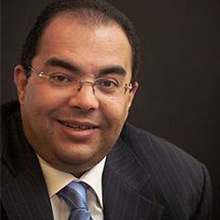In a nutshell
The Sustainable Development Goals (SDGs) urge us to address challenges in poverty, health, inequality and many other areas, while vowing to leave no one behind, with a deadline of 2030.
Many of the SDGs both address the current crisis as well as longer-term needs, including: good health and wellbeing; water and sanitation; ending hunger; decent work and economic growth; and quality education.
This crisis has shown us the enormous economic and human costs of ignoring our own best advice to stave off the next crisis – this time, let’s do the right thing and deliver.
The global Covid-19 health and economic crisis compels us to act in the short term – in the here and now. We can’t look away from the human health consequences without giving our best efforts to lessen the suffering of those infected.
On the economic side, there is also great pain that must be assuaged. Some people are even using the ‘D-Word‘ to describe our unique predicament, with no widely agreed solutions, and central bankers feeling the need to reassure markets that they are not running low on ammunition.
Multilateral organisations such as the World Bank and the International Monetary Fund (IMF) have abruptly retooled and turned their focus completely towards this new global challenge, making sweeping changes in their agenda, engineering relief from debt service and making substantial new investments in disaster response.
The IMF estimates the total fiscal crisis relief is now at $8 trillion. The United Nations is also urging debt relief, while organising a coordinated response and sending technical and material assistance to dozens of countries. The European Union is stepping up with a large stimulus bill. Even a divided US Congress agreed to spend $2 trillion for its crisis response.
However, poor nations, including those not yet experiencing high infection rates, will find it much more difficult to find the resources to climb out of this predicament. Low- and middle-income nations will benefit from multilateral assistance, but as infection rates rise, these nations may be disproportionately affected since 93% of the world’s informal employment is in emerging and developing countries.
Helping these workers may require novel approaches, such as cash transfers, which have been used with success in other crisis situations, while some nations are offering tax relief to spur business activity, and others recommend wage subsidies and adjustments to credit guarantees and loan terms.
Of course, we have no choice but to act. Yet what happens when the crisis is over? There is likely to be another Cassandra-like report which foreshadows the next crisis, begging our future selves to act in our own self-interest and to invest in solutions to problems that will confront us soon enough. Yet we rarely act to forestall or lessen the next crisis.
It’s not like we haven’t seen (a milder version of) this movie before: 15 years ago after SARS; and five years ago after the Ebola outbreak. Both times we diverted our attention just long enough to deal with the immediate needs, and then ignored the careful high-level post-mortem reports that laid out key decision-making and investments that would help us respond to potentially much bigger challenges in the future like Covid-19.
Yet, buried in those not quite dusty post-mortem reports is a guidebook that shows us the way to serve both our short-term and long-term needs: to invest in the Sustainable Development Goals (SDGs).
The 17 SDGs provide a pathway for us to ‘build back better‘ after the Covid-19 crisis, according to UN Secretary-General António Guterres. These global goals urge us to address challenges in poverty, health, inequality and many other areas, while vowing to leave no one behind, with a deadline of 2030.
Many of the SDGs both address the current crisis as well as longer-term needs, including:
Good health and wellbeing (SDG3)
Right now the World Health Organization and other partners are supporting government Covid-19 responses, including testing, isolating and caring for confirmed cases, while also tracing and quarantining people who have come in close contact with the infected.
Over the long term, each country needs a health system that can deliver quality, essential healthcare and preventative services to everyone. They also need the capacity to perform future disease surveillance and diagnosis rapidly to identify, treat and contain outbreaks, so that the human and economic costs are lessened.
Water and sanitation (SDG6)
To slow down the transmission of Covid-19, people need to wash or sanitise their hands. Yet today three billion people do not have access to even basic handwashing facilities at home, largely because they lack access to clean water, which increases their vulnerability to disease and ill health.
Longer term, we must achieve universal access to safe and affordable drinking water and adequate sanitation for all in order to slow down the spread of infection and improve the health of all people.
Ending hunger (SDG2)
In many parts of the developing world, school closures mean the loss of children’s meals. In addition, global supply chains and trade have been disrupted, not just for food, but for agriculture inputs that support food production, exacerbated by the substantial number of workers idled due to Covid-19.
Now is the time to act for long-term food security by making investments in technology that can improve agriculture productivity and the incomes of small-scale farmers.
Decent work and economic growth (SDG8)
According to the International Labour Organization (ILO), the Covid-19 crisis is expected to wipe out 6.7% of working hours globally in the second quarter of 2020 – equivalent to 195 million full-time workers. The ILO and others are urging that countries offer at least a basic level of social protection to as many people as possible, as soon as possible.
Longer term, countries need to make investments to sustain per capita economic growth, productivity and entrepreneurship, to support formalisation and growth of micro, small and medium-sized enterprises, including through access to financial services.
Quality education (SDG4)
According to the United Nations Educational, Scientific and Cultural Organization (UNESCO), Covid-19 has forced an estimated 1.5 billion learners to stay at home. UNESCO is supporting governments for distance learning, scientific cooperation, and information support.
Longer-term support means that we need to make sure all children – especially girls – are in school and reaching literacy and numeracy targets, and are given greater access to secondary and tertiary education, as well as vocational training, while all should be served by well-trained teachers.
These are just a handful of examples of a comprehensive and applicable framework to enable us to achieve these goals while fighting poverty in an inclusive and sustainable way. Yet these Covid-related SDGs require adequate financing to respond to the crisis and also to make investments that can help us to become resilient to the ever-present threats.
This crisis has shown us the enormous economic and human costs of ignoring our own best advice to stave off the next crisis. This time, let’s do the right thing and deliver.
This column was first published by Brookings – see the original version here.



